A tradition in both Daoism and Buddhism, Ghost Month is celebrated during the seventh lunar month in Taiwan, generally falling in August and September. Ghost Month, as the name implies, lasts a full thirty days and has several associated festivals. In this article, we’ll be talking about the traditions, taboos and individual festivals associated with Ghost Month in Taiwan.
But before going any further, we should talk about Ghost Money
1.What’s the deal with ghost money?
Daoist belief holds that after a person dies, their spirit goes to an afterlife realm, not quite the “hell” of western beliefs (though there’s also a Daoist hell), but more of a spiritual waiting realm.

However, as on the material plane, provisions are still required, and It falls on the living relatives to burn ghost money (also called Joss Paper) so that deceased family members can purchase day-to-day necessities like food and clothing in the afterlife.
There are two types of ghost money, which you’ll see being burned at temples around Taiwan. Yellow with gold print is an offering to the gods. Yellow with silver is for the ancestors, and is generally burned on the 1st and 15th of every month. Think of it as a celestial wire transfer.
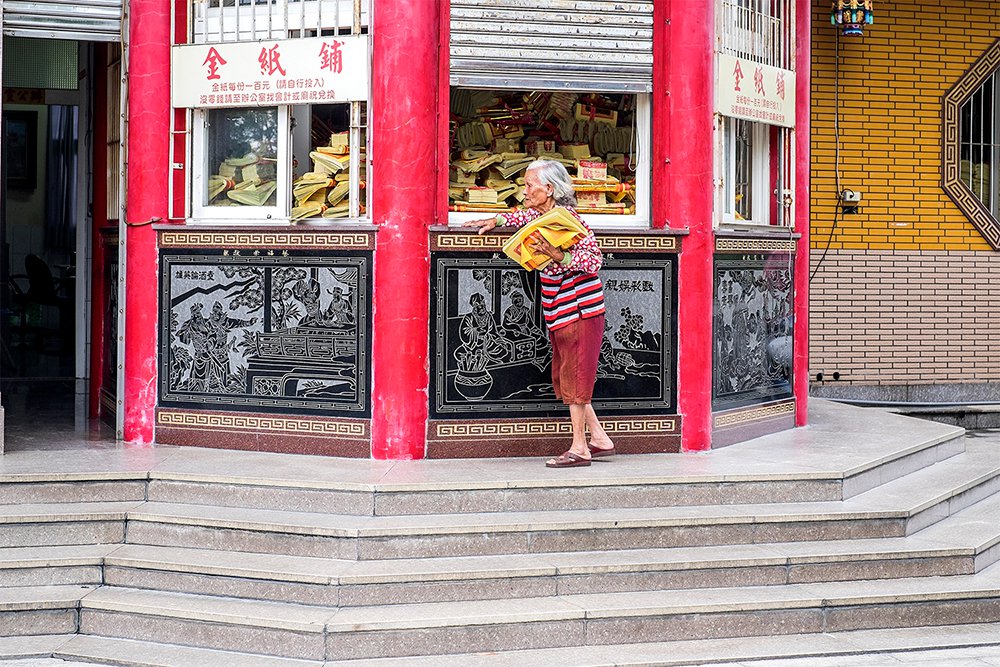
While ghost money is burned throughout the year, it’s important to understand its connection to Ghost Month, for during this period, according to believers, the gates to the underworld are flung open, allowing spirits to enter our world. This is not in and of itself a cause for alarm, as it gives the deceased a chance to come back to the material plane to check in with their families.
2.The connection between Ghost Money and Ghost Month
Things get tricky (literally) in the case of ghosts who have no living relatives, have died without heirs, or ghosts whose family members have neglected to burn ghost money throughout the year. Such neglected spirits are prone to becoming mischievous and play pranks on the living.

Among the tricks played by more vengeful spirits are to trick mortals into switching places with them, forcing the mortal to return to the underworld at the end of Ghost Month while the spirit gets an extended visit on the material plane.
Accordingly, several rituals have developed to appease these hungry ghosts throughout the month, as well as taboos to avoid prematurely joining their ranks.
3.Rituals and Taboos about Ghost Month Worth Noting
Certain activities are considered inauspicious during Ghost Month, including moving one’s home, starting a new business or getting married. As a casual traveler in Taiwan, this probably won’t affect you (unless you’re planning to come here to have a wedding in Sun Moon Lake, in which case you’d be within your rights to ask for a discount).

More esoteric traditions include avoiding hanging clothes out to dry (lest ghosts slip them on and impersonate the living) and substituting the term “good brother” for ghost (to avoid offending any wandering spirits).

So what taboos can actually work in the favor of casual travelers (or, for that matter, the many Taiwanese who consider the belief mere superstition)? Look no further than your local beach, lake or pool, as those who follow tradition believe that swimming during Ghost Month is definitely tempting the fates. Believers hold that the spirits of the drowned will attempt to trap swimmer’s souls in the water, as ghosts find swimmers easier to possess. As a result, beaches tend to be far less crowded during Ghost Month.
4.Ghost Month Festivals and Events Worth Catching
Visitors to Taiwan will no doubt notice a certain buzz during Ghost Month. Families will light lamps and hang them in front of their doors; these “ghost lanterns” are meant to help to light the path for visiting spirits. You may also see small tables set up in front of homes and businesses with candles and incense, as well as offerings of fresh fruit and rice wine.
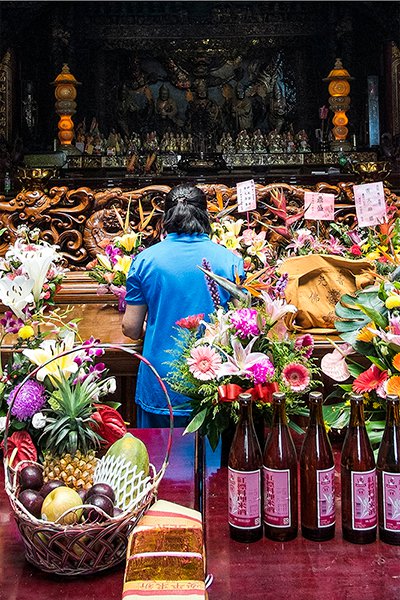
Naturally, there’s a legend connected to this practice. According to this legend, a disciple of the Buddha named Maudgalyayana discovered that his deceased mother was unable to consume his offerings, which turned to fire when put to her spectral lips. The Buddha instructed him to pray over the food to bless it, which allowed her to finally eat the offerings.
Temples will have various events throughout the month, including operas, puppet shows and live singing. These entertainments are meant for the ghosts but the living are also welcome to attend. Just be sure not to sit in the red seats that make up the front row, left intentionally vacant for the spirits, considered honored VIPS during the month.
Though there are events throughout the island, Taiwan’s northern port city of Keelung has become the go-to spot for visitors looking to experience Ghost Month festivities. celebrations are quite large and colorful.
5.Opening of the Gates Ritual(開龕門)
Keelung’s Lao Da Gong Temple contains a set of temple doors believed to be a doorway to the underworld. Naturally, this temple is extremely important, and has its own special ceremony, the Kanmen Ritual (“Opening the gates”) to open the doorway at the start of the lunar month.
6.Pigs of God Festival(義民節)
During Ghost Month, Taoyuan hosts the Pigs of God Festival, a traditional Hakka celebration. Pigs are intentionally overfed so they will grow to unnaturally large sizes. Record pigs for this festival have weighed over 1,000 kilograms. After ballooning to giant size the pigs are slaughtered and their skin is stretched onto wire frames and paraded in front of a temple as a sacrificial offering to the ghosts. After the ceremony, the gigantic pigs are butchered and worshippers receive a share of the meat. In recent years, the festival has come under fire from animal rights activists and has gained a controversial reputation. The number of pigs on display has decreased over the years and locals believe the ritual will one day either fade into obscurity or that the pigs will be replaced with fruit offerings.(Read More: The Pigs Of God)

7.Festival of Water Lanterns

The middle of Ghost Month is quite festive and Keelung again hosts one largest parade for the occasion. The Water Lantern Festival occurs during the evening of the 14th day of the seventh lunar month. The parade features large floats covered in large lanterns, flowers and loud speakers. Many groups participate including musicians and local businesses. Traditionally, a different local family will host the event each year. After the parade, paper water lanterns are led to Badouzi Harbor. These lanterns are shaped like houses and are stuffed with ghost money. Each lantern is sponsored by a specific family. At midnight these lanterns are set aflame and are released onto the water. Crowds eagerly watch to see how long the lanterns burn before capsizing. The longer they remain afloat, the more auspicious the coming year will be.
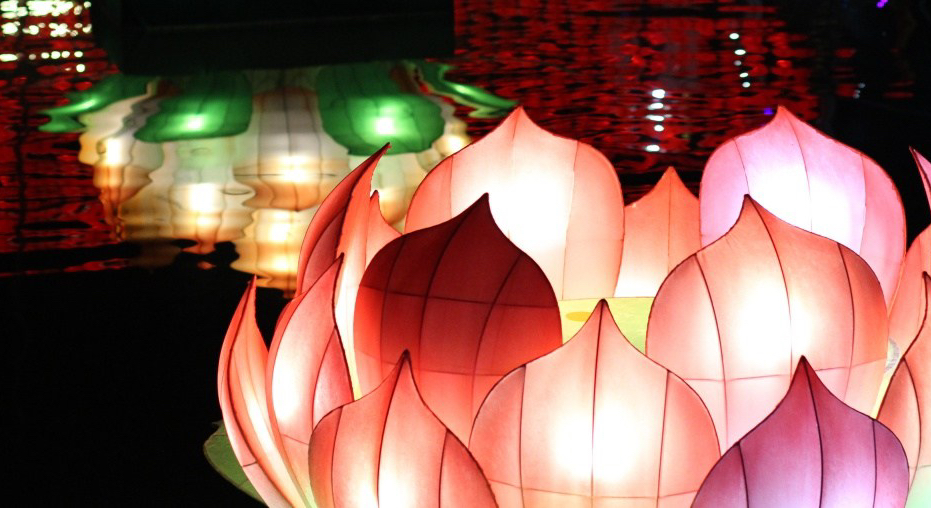
Though the Keelung festival is the largest, you can see people in other areas of Taiwan releasing small lotus shaped lanterns onto rivers and out into the ocean. Each lantern will hold a single candle and are said to help guide the ghosts back to the underworld.
8.Hungry Ghost Festival(盂蘭節)
The day after the Water Festival is one of feasting. Falling on the 15th day of the seventh lunar month, this festival is held all over Taiwan. Ghosts are offered multiple varieties of meats, dumplings, fruits and vegetables. Later in the evening after the ghosts have taken their full, the living will eat the offerings for dinner. Keelung’s Hungry Ghosts Festival and Yunlin’s Great Worship Festival are both large and heavily attended. (Read more: The ghosts were out in Keelung, or Ten Festivals Worth Planning your Taiwan Holiday around (Part two))
9.Toucheng Ghost Grappling Festival(搶孤)
Toucheng hosts a special festival that occurs during the end of Ghost Month. The Grappling Festival is a contest involving tall vertical bamboo poles that are tied into a framework. The tall poles, reaching as as high as 20 meters, are covered in grease with flags secured at the very tops. Competitors attempt to climb the greasy poles to capture a flag. Winners receive monetary gifts and good fortune for the coming year.
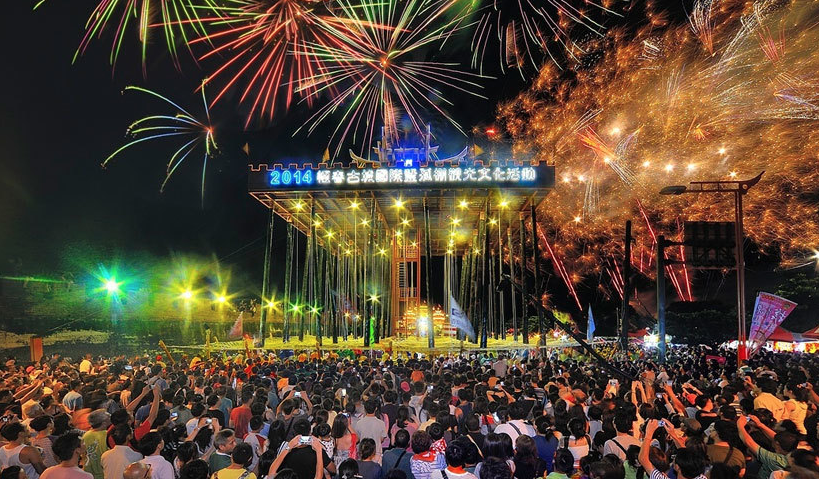
10.Closing the Gates of Hell(關龕門)
At the end of Ghost Month the Gates of Hell are officially closed at Keelung’s Lao Da Gong Temple. The doorway to hell is located to the left of the temple’s main shrine. Like the opening ceremony, offerings will be on display and worshippers can be seen showing their respect.

11.Jump the Ghost Festival(跳鍾馗)
Keelung also holds one final ceremony for Ghost Month and though variations of the ceremony occurs around the island, theirs is again the largest. The Jump the Ghost Festival is a special ceremony to help bring reluctant ghosts back to the underworld. Held after the closing of Ghost Month, this ritual is to round up any lingering ghosts. This ritual is also known as “Jumping Zhong Kui” which refers to a figure of Chinese mythology who is known for vanquishing ghost.
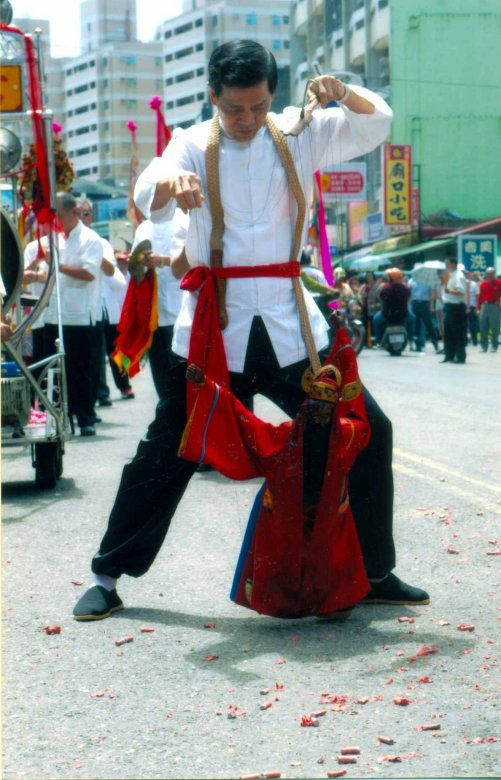
Got Ghost?
Ghost Month is celebrated throughout Asia but Taiwan’s small size makes it easy to take in several festivities across the island. Experiencing this month-long celebration just might make a believer out of you.












